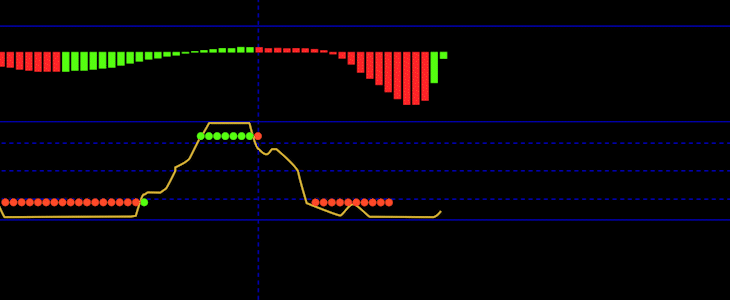As a beginner in online trading, you have probably encountered the term sector rotation. But what is it? How does it relate to the stock market or forex trading?
Sector rotation in forex and equities is a strategy in which traders move between industries or currencies depending on the direction of the economy’s trend.
It allows traders to capitalize on growth while avoiding contraction in poorly performing areas of the economy.
This article will simplify sector rotation and explain how it functions in both market sectors. So, let’s begin!
What Is Sector Rotation in Trading?
Sector rotation is a type of trading strategy. It involves allocating different sectors of an economy based on changes in stock market prices.
Investors tend to shift their attention to the economy as a whole. For instance, in expansion periods, information technology or spending stocks flourish. In slower periods, investors look to retreat into defensive stocks such as healthcare or utilities.
Like in stock trading, this strategy is also widely used in the Forex Market. In Forex, traders toggle between currency pairs based on economic indicators. They attempt to capitalize on favorable price movements and get out before the prices decline.

How Does Sector Rotation Work In Stock Market?
In the Stock Market, sector rotation is done according to the economy’s cycle stage. The US economy passes through four stages: expansion, peak, contraction, and recovery.
Each stage favors additional distinct industries. Here’s a breakdown by phase:
- Early Expansion: Traders focus on Technology, Retail, and Industrials.
- Peak: Energy and materials tend to be frontrunners.
- Contraction: Health care, utilities, and consumer staples perform better.
- Recovery: The rise starts in the Financial and discretionary sectors.
Some traders use CFDs to shift stock sectors quickly. They profit by trading the difference in price without owning the share.
Top 4 Effective Strategies for Sectoral Rotation
Here are some straightforward methods to get started with sector rotation.
1. Follow The Business Cycle
This is the most fundamental strategy. Invest your capital depending on how far the economy is in its growth stage. While growth is increasing, focus on spending on technology and finance. When growth slows, shift into defensive sectors such as utilities and healthcare.
Use reports from the US, such as GDP growth figures, unemployment rates, and inflation numbers. These are released on a quarterly and monthly cycle. You can get the data from different websites, like tradingeconomics.com, which updates the information regularly.
2. Attain Using Technical Indicators
A chart can illustrate the exact moment in time a sector is gaining strength. Momentum tools such as moving averages, RSI, and volume monitoring provide insight into where larger players are directing their funds.
These tools are available on FXcess, which comes with its Metatrader 4 terminal. Traders can set alerts and plan their trades quickly.
3. Diversify Across Markets
These traders also have the opportunity to use sector rotation while trading in forex. Do not simply limit yourself to stocks in the United States. For example, if the US dollar is weak, look at the Swiss Franc or Japanese Yen, which performs better.
Trade commodity—or stock sector-sensitive currency pairs, including AUD/USD, which is often affected by Mining stocks. With CFD trading, you can access these markets without possessing the currency or asset.
4. Use ETFs for Easy Access
Not ready to trade individual stocks? Try SPDRs and other sector ETFs. These funds focus on specific segments of the US economy. As trends change, you can move your money to other ETFs swiftly.
This is a good strategy for beginner investors who want to limit exploration to low-risk environments.

Benefits of Sector Rotation
Sector rotation allows traders and investors to stay ahead of the market. It has a collection of intuitive but strong benefits for both beginner and experienced traders.
1. Higher Returns
With sector rotation, you can move into performing sectors. This positively increases the chances of you earning better returns over time.
2. Reduced Risk
You protect your money by skipping sectors that are on a decline. This makes your trading more safe, especially during uncertain times in the market.
3. Flexibility
Sector rotation can be applied to both forex and stock markets. It suits many trading methods, whether you are buying stocks or trading currencies.
4. Simple to Learn
Using the right tools, this strategy is simple to understand. Beginners can easily follow sector moves with tools such as FXcess and Metatrader 4.

Limitations of Sector Rotation
- Difficult Timing: Deciding how and when to switch sectors is complicated. You may rotate too early or too late.
- Noise In The Market: Sector rotation is prone to market hype and news. Always trust cold, hard data rather than hype.
- Increasing Fees: Rotating too frequently increases the number of trades which lowers costs.
- Spending Time Remotely: This is further complicated by the need to track the economy, read charts, and understand multiple sectors. “Set and forget” wouldn’t work here.
Conclusion
Sector rotation is capable of improving your returns in forex and equities, but only if the research and tools used are well strategized. Otherwise, it won’t work.
Focus on American economic indicators when trading from the US. Ensure the platform is equipped with advanced tools that remain intuitive.
FXcess is among the best because of its low entry barriers. The platform has Metatrader 4, online trading, and allows trade through CFDs in multiple sectors and currencies. Fast execution, reliable support, and low entry barriers make this a good option for everyone, from novices to seasoned traders.
FAQs
1. What is sector rotation?
Sector rotation is a type of trading strategy where you shift funds from one industry to another depending on how the market is performing. The aim is to minimize investment in the underperforming areas and maximize investment in the growing ones.
2. Can I use sector rotation in forex trading?
Definitely, in forex trading, you have the flexibility to shift your attention from one currency pair to another. For instance, you could change from trading USD/JPY to trading EUR/USD depending on the economic data available.
3. What tools do I need for sector rotation?
Use Metatrader 4 for charting and signal reception. You also require economic calendars, trackers for different sectors, and news reporting that is up-to-the-minute. All these tools are offered by FXcess.
4. Is sector rotation risky?
Every trading activity has risks involved. But sector rotation can be useful in minimizing losses due to the avoidance of some sectors. But as with everything else, the right timing and research is important.
Disclaimer:
This information is not considered as investment advice or an investment recommendation, but instead a marketing communication. FXCess is not responsible for any data or information provided by third parties referenced, or hyperlinked, in this communication.